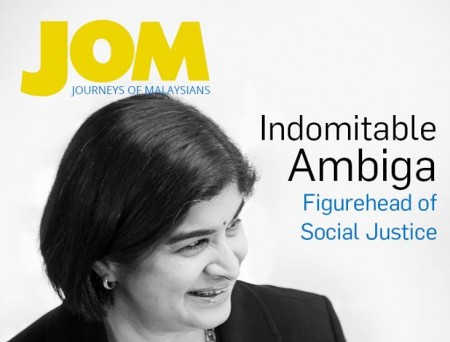Joyce Ng, JOM magazine editor talks to New Mandala (NM).
NM: Could you tell us a little about JOM magazine
Joyce: JOM magazine is the first and only Malaysian community magazine in Australia and is based in Melbourne. We publish our print magazine bi-monthly and also provide news and stories on a daily basis via our website at www.jommagazine.com.au
NM: What are the objectives of JOM magazine
Joyce: JOM’s objectives are quite simple – to provide a media platform to connect Malaysians and disseminate news and stories pertinent to the interests of diaspora Malaysians. We think that living overseas in Melbourne have given us new dimensions to our culture and identity yet we retain our sense of ‘Malaysian-ness’ (this may include people who are concerned about issues back home, not only about cultural identity). We also realised that the Malaysian community in Melbourne is the only Asian migrant community in Melbourne, which didn’t have a publication. Given the fact that Melbourne is the city that has the largest Malaysian migrant community in the world, we felt that a magazine like JOM could work.
Since starting, we have encountered many Malaysians here who are very passionate about Malaysia. Many of them have a real personal and emotional connection and hope to have a stake in the future of the country even though far away from home. JOM aspires to provide a centralised platform for them to express their voices and stories. JOM also aims to provide a space for the many young talented Malaysians in Melbourne to express their creativity and ideas.
NM: What are some of the challenges JOM magazine has experienced?
Joyce: In the past one year of JOM, there have been many difficulties in growing the magazine, but we believe we have made an impact. Our high-quality print magazines are distributed free at public spaces such as groceries, restaurants and universities and a digital version is also available online. We rely on the contribution of advertisers to cover production costs. With a physical circulation of 3,000 copies per issue, plus our online version, we estimate that we have a readership of about 20,000.
NM: What else are you or JOM magazine involved in?
Joyce: Apart from publishing the magazine, our company JOM Media Pty Ltd also provides competitive printing, designing and other marketing related services to small and medium businesses in Melbourne.
NM: Why JOM magazine, why now?
Joyce: JOM believes that print is still relevant in the digital age and will never die completely. In fact, there are more and more new titles coming up in Australia in recent years, even though the print run for many magazines have been reduced.
We treat our print magazine as a ‘product’ and a ‘craft’ or ‘art’, rather than just ‘information’. Thus our magazine has an aesthetic value and a lot of attention is given to the design aspects. The textile character of the magazine gives readers a more ‘real’ feeling and it gives a different dimension compared to reading online – we think that reading in print is still more comfortable and is better for health for people in general, especially for long articles. We also have encountered young people who appreciate our print magazines, preferring it to online content.
Notwithstanding this, our print magazine is also available online in a digital format, and we also have a website that aims to utilise the connectivity and convenience that internet provides.
I cannot say for certain in why after so many years, there is only now a Malaysian community magazine in Australia. However, I have come across people who have tried to do so in the past but failed. The reasons for them were that it was ‘difficult’, and there were issues with putting together the right team, as well as making enough money to make the magazine sustainable. I guess without labour of love, a magazine like JOM will be hard to start and sustain.
Apart from that, it has been said that Malaysians can read English thus they can read newspapers and magazines here. Unlike other migrant communities such as Korean, Chinese and Thai, Malaysians are generally quite proficient in English. Thus we have not had to rely on native language publications like other communities have.
My final personal observation is that, generation-Y have stronger identity as Malaysians than earlier generations. Rather than calling ourselves ‘Malays’, ‘Chinese’, ‘Indians’ or ‘Others’, we call ourselves Malaysians. I have met quite a few early migrants in Australia who identify themselves as Chinese and have mixed well with the Chinese community groups here; although their accents are usually quite different. Many of them also do not want to identify themselves as Malaysians as the reason for living (Corrected: leaving) Malaysia is usually because they feel they were not recognised as ‘Malaysians’ back home. Having the weak sense of identity plus the versatility of their language, they have not felt the need to establish a magazine with such identity here. I believe it is the idealism and optimism of our current generation of Malaysians that has led to us starting JOM.
 Facebook
Facebook  Twitter
Twitter  Soundcloud
Soundcloud  Youtube
Youtube  Rss
Rss 